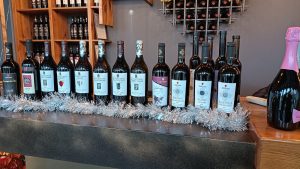Wine Travels Feature: K.I.S.S. Georgia- the Cradle of Wine in Europe

First time I went to Georgia in 2014, many people asked me if I was going to Atlanta- the Capital of the state of Georgia in the US. When I visited this erstwhile Russian- controlled Georgian nation last month, a much lesser number of people asked me the same question. One of the reasons could be that a direct flight was started this year by Indigo mid last year, piquing their interest. The other important reason could be that no visa is required for those with a valid visa to the US, UK or Schengen.
In fact, Georgia is fast becoming the ‘Flavour of the Month’ for Indians who have been itching to travel to any country after Covid and find it easy and rewarding to visit this –Visa-free country (in any case, visa is available online).

One thing that has not changed in Georgia is the political situation. When I visited it the first time, people dreaded Russia ‘gobbling them up’. That fear does not seem to have lessened. If at all, there is more of that insecure feeling after the Russia- Ukraine war, though the oldest wine producing country in the world, has applied to become a member of the European Union and its application was accepted on 14 December, when I was there.

Georgia is a former Soviet republic that’s home to Caucasus Mountain villages and Black Sea beaches. It is a country at the intersection of Europe-a transcontinental country located in Eastern Europe and West Asia.
Georgia has 80% terrain full of mountains. The small country with a population of 3.7 million, less than the whole of South Delhi, has Russia on the north with Armenia in the South. Azerbaijan (Capital- Baku) in the Southeast provides the road link to Tehran, and Turkey to its Southwest. Lari (GEL) is the official currency (1€=2.9 GELs/Lari). Incidentally, this is one country where no commission is charged on currency exchange and the difference in buying/ selling rates is less than 0.5%. Money can be exchanged freely at multi-points in all parts of Tbilisi, the Capital and other towns.
Also Read : Wine and Food Travel: Qvevri Wine Making Tradition of Georgia
Qvevri Boom

Georgia is ostensibly the oldest country in the world making wine, going back to over 8000 years, though Armenia also lays claim to be the oldest and Italy not far behind. The traditional style of winemaking is based on the use of quevri, the special shaped earthen pots that are buried into the ground so that they are hidden from the naked eye.

White wines made in this process have an amber colour and develop nutty shades of flavour of almond, walnut or even dried apple. The long maceration in contact with grape seeds also adds the tannins that have the nourishing anthocyanins. Georgians call leaving the wine on the skins as ‘leaving it with the mother’ and believe that wines made in a qvevri have more soul.

Qvevris produce wine which is more earthy and fuller in body and flavours, especially the white wines. ‘Acquired Taste’ is the word most apt for these wines. But for those looking for a change or wine with a personality- wine with a soul, qvevri wines offer an exciting alternative. Thus Georgian wines come the closest to making natural wine or ‘orange’ wine as the world has termed them. Most Georgian take umbrage to the use of the word and distinctly prefer to term it as ‘Amber’ wine due to the colour of the white wine fermented/stored in Quevries.
Like everywhere else in Georgia, there has been a sudden boom in the qvevri wines after the Heritage Status granted to the traditional process by UNESCO. It’s also good for wine tourism which is on the increase.
However, during both my visits to Georgia, I found a minimal usage of quevries in production. Though many modern wineries have a few quevries producing wine, their use is minimal. During the first day of my visit, I met Vladimer Kublashvili at the corporate headquarters of Winery Khareba in Tbilisi along with one of the two brother partners, Aleksandre.

Vladimer is the epitome of winemaking in Georgia. The Deputy General Manager of Khareba is a professional winemaker with years of experience overseas, including getting a Wine MBA. A brilliant winemaker, an international wine judge, he has several administrative duties to perform as well now. He told me that Qvevri is a national symbol, a metaphor that identifies Georgia as the oldest winemaking region in the world. Though around 8% of the wine produced uses qvevri as the vessel for fermentation and even as storage, Khareba Winery which is a modern winery with over 25 years of history, makes only about 5% of its total wines using them as the fermenting vessels.
Also Read : K.I.S.S. Georgia-the Oldest Wine Producing Nation
Paradoxically, this could well be the very reason why wine drinkers in the world, especially the novices in India get overawed but there is a growing number, especially in evolved countries like the USA and wherever young millennials willing to experiment reside, that it is finding new audiences. Qvevri wines have been traditionally made by households for the consumption by their families and friends; there is a saying that every household has a small winery! All the same, Khareba makes many award-winning Qvevri wines, one example of which I was able to see and taste during my visit to the Experience Center at Kakheti.
Georgia’s wines fall into several zones: Kakheti and Kartli in the east, and Imereti, Samegrelo, Guria, Ajaria, and Abkhazia in the west. By far the most important of these is Kakheti, which produces 70% of all Georgian wine. We visited this region as also Imereti during our 5-day visit to Georgia last month.
Contd. In the next edition of delWine
Subhash Arora



